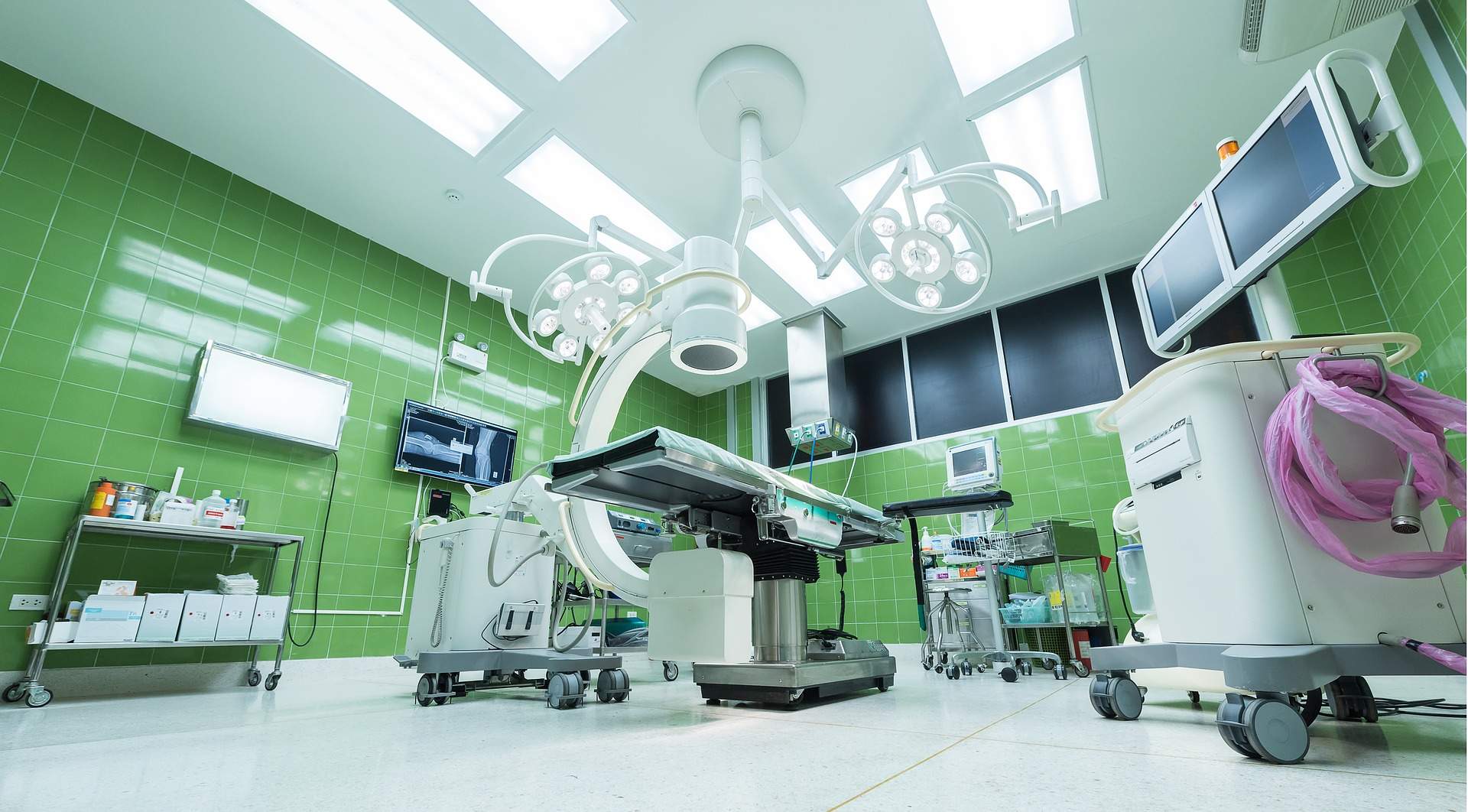
As pressure on the healthcare sector increases, could leasing be an answer to sourcing vital equipment and technology? Saad Ahmed speaks to leading industry figures to find out how this could be achieved, and what benefits it could bring
Leasing or alternative financing structures are becoming a differentiator in the healthcare sector, not only for the UK,” says Thorsten Arp, general manager at Philips Medical Capital Europe and medical equipment leasing specialist at Société Générale Equipment Finance (SGEF).
“Hospitals and private practices are trying to generate cost savings by focusing on new medical procedures, new technology and new procurement structures,” he adds.
Healthcare is expensive. The UK’s National Health Service (NHS), composed of its regional entities in England, Scotland, Wales and the Health and Social Care Service Northern Ireland, has received an increase in its budget each year since 1985.
Despite this, the size of its real spending rises has been significantly reduced, according to UK healthcare charity The King’s Fund. For the year 2016-2017, the NHS received a 1.6% funding increase to £116.1bn (€128.5bn). In comparison, the NHS received its largest ever increase in budget in 2002-2003, when it rose by 12%.
For 2017-2018, the UK government has allocated £117.6bn in the NHS’s departmental resource budget. An increasingly ageing population, which the Office for National Statistics (ONS) says has reached 18% aged 65 years and above, presents a challenge to the health service.
How well do you really know your competitors?
Access the most comprehensive Company Profiles on the market, powered by GlobalData. Save hours of research. Gain competitive edge.

Thank you!
Your download email will arrive shortly
Not ready to buy yet? Download a free sample
We are confident about the unique quality of our Company Profiles. However, we want you to make the most beneficial decision for your business, so we offer a free sample that you can download by submitting the below form
By GlobalDataA key expense of healthcare is equipment, such as machinery. With a new magnetic resonance imaging (MRI) scanner retailing at $3m ($2.51m), the rise of leasing in healthcare to solve technological and healthcare demands is unsurprising. Leasing Life investigates the role of asset finance in healthcare, and whether it could give medical services a new lease of life.
How common
The use of leasing in healthcare has increased as hospitals’ requirements have changed. Arp tells Leasing Life that the need to source equipment for shorter terms, combined with a lack of investment capabilities, has in many cases moved healthcare providers away from the model of outright ownership.
“The European market has fundamentally changed. Today we have various hospitals in the different European markets with a lack of investment capabilities but with the need to replace the existing medical installed base,” he says.
According to Arp, the old model of hospitals and healthcare trusts purchasing equipment to keep far beyond their useful life is fading away as they come under increasing financial pressure. The development of more specialised diagnostics equipment has also increased the need for hospitals to acquire more equipment, even as they become ever-more stretched.
“Additionally, the development in medical technology and the related medical opportunities to improve the processes in diagnostics and therapy have increased,” Arp explains. Service-oriented solutions, such as leasing, can offer flexibility and availability to healthcare providers, he adds.
The increased specialism of procedures and machines needed to operate them will prove to be a driving factor in the adoption of leasing wholesale in the healthcare sector. In January, Henry Howard Finance provided funds for a Welsh university to acquire an Arcan Q10 3D printer. The printer uses data from CT scans to manufacture surgical implants in titanium.
The technology will be used in research, and to further develop 3D printing for medical use. Henry Howard did not disclose the cost of the 3D printer.
While mostly used for research at present, this is an example of a product which may provide benefit to hospitals through a lease agreement in the future. As a highly specialised piece of equipment which may not be used on a daily basis, leasing would prove an affordable and accessible solution for a cash-strapped hospital seeking to use it.
Chris Wilkinson, head of sales for healthcare for Siemens Financial Services (SFS) in the UK, describes leasing in healthcare as a “cost-effective investment enabler”. He says that particularly for high-risk areas where budgets are under pressure, asset finance can provide a viable solution.
“In many instances acquiring the latest technology may overstretch the traditional funding resources of many providers, meaning healthcare organisations can be caught in a predicament where budget limitations are hampering the ability to make the essential investments,” he says.
Wilkinson adds that SFS provides asset finance solutions across the spectrum of medical equipment, and notes that diagnostic technology, such as MRI, is especially popular among healthcare lessees.
“Asset finance is particularly suited to funding diagnostic imaging equipment because of its relative cost and its integral role in the provision of healthcare,” he says. “These assets are key to preventing, diagnosing and treating a range of conditions and the technology is developing rapidly, resulting in better, faster imaging which helps to enhance the patient pathway.”
More to give
The main factor influencing the rise of leasing in healthcare is cost. As the interviewees tell Leasing Life, leasing options allow costs to be spread, and provide a more accessible method of obtaining an asset.
Another key selling point of asset finance in healthcare is the number of additional services that lessees provide. In the last issue, Leasing Life examined the rise of managed service contracts. In these agreements, lessees provide an asset and boost their offering with services, which may include maintenance, data analysis and assistance.
Wilkinson says SFS offers technological insight and in-depth sector knowledge to its lessees in the healthcare sector. “Tailored, all-encompassing financing packages tend to be offered by specialist healthcare financiers, such as SFS which has an in-depth understanding of production technology and its applications – where appropriate, incorporating the provision of maintenance and service into a total solution offering,” he explains.
Arp tells Leasing Life that SGEF offers service packages that include maintenance, and even an “innovation clause” that allows lessees to update to new equipment when the technology has advanced.
“In this context it is not only about creating an operate lease structure, but more about combining different ingredients into one packaged solution for the healthcare provider,” Arp says. “Especially in managed equipment service transactions based on a partnership between healthcare providers, medical suppliers and lease companies, innovation clauses are part of the entire concept.”
The Internet of Things (IoT), a network of connected devices, is a developing trend in technology that may be poised to change healthcare. After research in 2016, SFS identified that the NHS and other health services suffered from difficulties with continuing digitisation and with technological trends shifting towards automation.
Wilkinson says SFS has explored the role of IT and technology in healthcare. “Upgrading IT is just one technology and digitalisation-related challenge faced by the NHS. NHS Trusts are working hard to keep up with advances in IT, both in terms of implementation and financial management. SFS has funded a number of IT infrastructure projects,” he adds.
Arp says SGEF expects data utilisation and the IoT to enable a usage-based leasing model within the healthcare sector through the provision of more precise information about how such assets are being utilised. “In the past the information about what exactly a user has done with a medical asset in respect to the number of examinations or the usage of a specific software solution was not always 100% accurate,” he says. According to Arp, mass data connectivity across different devices will allow these more flexible pay-per-use solutions to develop.
“Currently it is a starting phase, but SGEF expects that the availability and connectivity of different data sources will lead to usage-based solutions where the equipment is paid in line with the generated revenue for the user,” he adds.
Medical leasing and services are not confined to diagnostics or the operating theatre. Emergency services, patient transport, and other transport services required by the health service have come under pressure due to funding. Fraikin, a commercial fleet provider, is one such business providing transport for hospital trusts.
At the end of last year, Fraikin signed a fleet deal with the Heart of England NHS Foundation Trust. The deal saw the trust take 19 vehicles on contract hire, with a mixed fleet of vans, shuttle buses, tippers and box-bodied trucks.
Beyond transporting patients and staff, vehicles are used to transport hospital food, medical supplies, records, and waste. According to the trust, the deal with Fraikin lowered its costs, allowed it to cut the size of its fleet, and improved the average utilisation per vehicle. Martin Adams, then transport manager at Heart of England, said the deal gave it “the flexibility of a larger fleet without the costs”.
The concept of a services-based offering is significantly more developed in the fleet industry, and Fraikin’s deal provided maintenance inspections, a connected telematics system known as mySmartFleet, and the possibility of introducing electric vehicles and charging points for its fleet.
As leasing solutions grow within all parts of the healthcare sector, the demand for a greater service-based offering will only increase.
End of life
The interviewees refer to the end of a product’s useful life, and the desire for healthcare providers to keep products only as long as they are useful. Leasing, it is suggested, is a key answer to this. To this end, the lessors said they were involved in end-of-life processes, maintaining, refurbishing, and redeploying medical assets to other lessees.
“Together with our vendor partner we are managing our medical equipment portfolio in respect of fulfilling customer needs and to assure that our medical equipment can be used for more than one life cycle,” Arp explains, adding that SGEF analyses the upgrade options of each asset to determine a maximum usage period for the equipment. This, Arp says, will allow the assets to be used for more than one typical lifecycle, and can therefore be passed through the secondary market to another lessee.
“SGEF works closely with ‘refurbishment departments’ of our partners to define solutions for the second-hand market, including totally renewed systems,” Arp says. “The close relation and the asset-management capabilities are the key for the described service offering, including residual value risks at the beginning of our process in the healthcare sector.”
Wilkinson says that a significant proportion of SFS’s dealings with the NHS are leases based on residual values. He says SFS has a team tasked with remarketing medical assets to international markets. “The in-depth knowledge we have at Siemens of the healthcare sector allows us to offer competitive residual values, which in turn provides cost-effective propositions for the sector. This is reflected favourably in our share of the UK NHS market,” he says.
The future
Flexibility will be the main factor influencing an increase in leasing in the NHS and other healthcare providers. The need to balance tightening budgets, increasing demand, and a need for specialised equipment will see innovative leasing models emerge with an aim to service the industry.
“The healthcare sector will be influenced by a demand on flexible and innovative lease solutions for medical devices including long-term partnership models in future, [as] the total financed and lease volume will significantly grow over the next years,” Arp says.
“Healthcare providers have to invest in medical equipment to participate in the medical development and to assure efficient and high-quality processes by optimised cost ratios.”
Arp says that key to solving this need will be the development of full service offerings and usage-based payment structures. Wilkinson says that evidence of beneficial outcomes will prove to be more important than simply the underlying technology when deciding between leasing products in healthcare.
He says that to take advantage of this, lessees need to have specialised knowledge of the technology and its likely impact in healthcare. “That ‘intimacy’ with technology and its applications does not tend to be the province of generalist financiers. It requires specialist knowledge and wide experience, along with a close relationship between solution provider and financing partner,” he notes.
Fundamentally, leasing in healthcare seems set to remain a growth industry to deal with increasing demand. “We also expect the importance of NHS outsourced contracts to continue,” Wilkinson concludes.
“At the same time, NHS credit investment will become even more challenging, as the impact of doing ‘more for less’ increasingly stretches trusts’ financial positions.”







